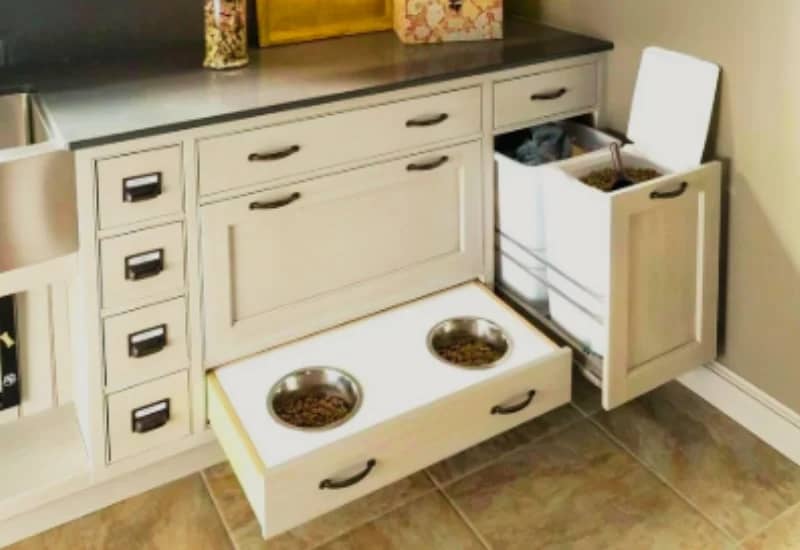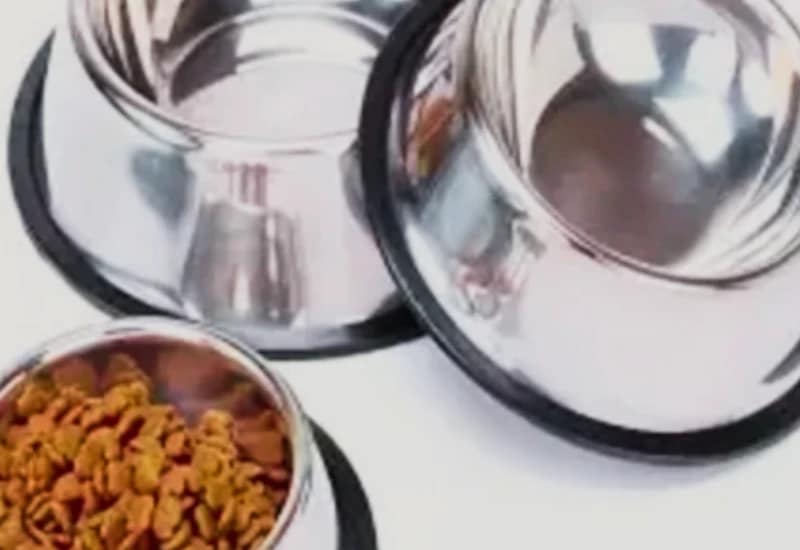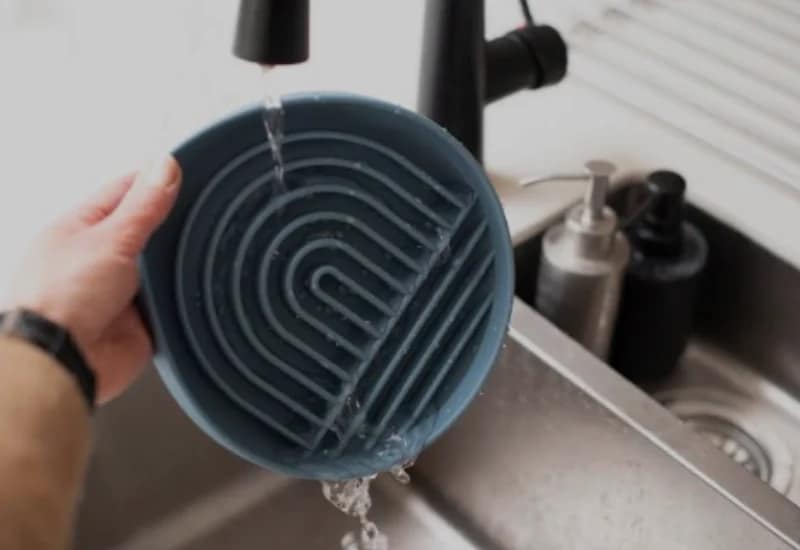Feeding your dog is a daily act of love. But did you know that the bowl you use plays a big role in your dog’s health and comfort? A dog feed bowl is not just a container; it is a part of your pet’s lunchtime experience, just like your own plates and kitchen tools are part of yours.
In this guide, I will explain everything about dog feed bowls, how they connect to kitchen hygiene, and how to choose the perfect one for your furry friend.
What Is a Dog Feed Bowl?
A dog feed bowl is a special bowl made to serve food and water to your dog. Like the pots and plates, you can use it in your kitchen. These bowls come in many types and materials, each designed for comfort, hygiene, and function.
Just like you wouldn’t eat from a cracked or dirty plate, your dog also needs a clean, safe, and durable bowl. Think of it as your dog’s dinnerware.

Why the Right Dog Feed Bowl Matters?
Imagine eating soup with a fork or drinking from a leaky cup. Not ideal, right? The same goes for your dog. A proper dog feed bowl helps your pet eat at the right pace, in the right position, and in a clean way.
Here’s why it’s important:
- Prevents overeating and bloating
- Improves digestion
- Keeps food off the floor
- Reduces mess like your favorite kitchen gadgets do
- Improves posture and comfort
Your dog’s bowl is like a daily-use kitchen tool, essential, often overlooked, but very important. Learn more about pet feeding safety from Zupet.org
Types of Dog Feed Bowls
There are many types of dog feed bowls, just like there are different kitchen tools for different tasks. Each has a purpose, and the right one depends on your dog’s breed, habits, and age.
Stainless Steel Bowls
This Bowl is the “non-stick pan” of the dog world. It is strong, easy to clean, and enduring. A stainless-steel dog feed bowl doesn’t hold germs and can be washed just like your kitchen pans by hand or in the dishwasher.
Best for: All breeds, especially dogs with allergies or wet food eaters.
Plastic Bowls
These bowls are lightweight and colorful, but just like cheap plastic kitchenware, they can crack, scratch, and trap bacteria. Also, it is not safe for dogs who love to chew.
Best for: Small, calm dogs only.
Ceramic Bowls
Stylish and heavy, these bowls don’t slide and look good like fancy serving dishes. But like your kitchen’s ceramic plates, they can chip or break if dropped.
Best for: Indoor dogs and medium-sized breeds.
Elevated Bowls
Just like a chopping board stand that brings comfort during cutting, these bowls lift the food up for better posture, especially for older or taller dogs.
Best for: Senior dogs or large breeds.
Slow Feeder Bowls
These bowls work like kitchen tools designed to slow you down, like a manual grinder. The patterns inside make your dog take their time, helping with digestion.
Best for: Dogs who eat too fast.
Travel Bowls
Silicone or foldable these are like lunch boxes for your dog. Easy to carry, clean, and perfect for road trips.
Best for: Dogs on the go.

How to Choose the Right Dog Feed Bowl?
Just like in your kitchen, where you choose the right tool for each recipe, picking the correct dog feed bowl requires smart choices.
Size
Match the bowl size to your dog’s portion. Think of it like using the right size cup for tea, too small and it spills, too big and it feels wrong.
Material
Would you cook in unsafe pans? No! In the same way, only go for food-safe materials in your dog’s bowl. Stainless steel is a great, hygienic choice.
Shape
Flat-nosed breeds need shallow bowls, while long-nosed breeds do well with deeper bowls, like using a deep salad bowl vs. a pasta plate.
Non-Slip Base
Just as you place rubber mats under your blender or juicer, a non-slip base keeps the bowl from moving around during meals.
Special Needs
Old dogs benefit from elevated bowls, and fast eaters need slow-feeder bowls just like some people need sippy cups or portion plates.
Benefits of Using the Right Dog Feed Bowl
Think of your dog’s feed bowl as a kitchen essential for your pet. The right one makes life cleaner, easier, and healthier.
Better Posture
Raised bowls work like cutting boards with stands; they prevent neck pain and promote comfort.
Controlled Eating
Just like using measuring spoons for your cooking, slow feeders help your dog control food intake.
Hygienic Mealtime
Stainless steel bowls clean easily just like your pots. They don’t hold smells or germs.
Clean Feeding Area
Just as kitchen counters stay clean with proper trays and mats, a well-designed dog feed bowl keeps your floor tidy.
How to Clean a Dog Feed Bowl?
You wouldn’t reuse an unwashed pan so don’t reuse a dirty bowl for your pet. Make cleaning the dog feed bowl part of your kitchen routine.
Cleaning tips:
- Wash after every meal with dish soap and warm water
- Avoid abrasive scrubbers just like you protect your non-stick pans
- Use vinegar or baking soda weekly for deeper cleaning
- Dry completely before use
Treat your dog’s bowl like you’d treat your favorite kitchenware.

Best Dog Feed Bowl by Breed
Just like certain knives or blenders are better for specific kitchen tasks, some bowls suit certain dog breeds better.
| Breed | Bowl Type |
| Pug/Bulldog | Shallow, wide |
| Greyhound | Elevated, deep |
| Labrador | Large, stainless |
| Chihuahua | Small, ceramic |
| Boxer | Slow-feeder |
Indoor vs. Outdoor Dog Feed Bowls
Would you use your indoor glassware outside during a barbecue? Probably not. The same logic applies to your pet.
Indoor Bowls:
- Can be ceramic or fancy
- Less likely to tip over
- Matches kitchen décor
Outdoor Bowls:
- Should be durable like your BBQ tools
- Preferably stainless steel or heavy plastic
- Should resist weather and insects
Common Mistakes to Avoid
Mistakes are easy to make, just like using the wrong spatula on a non-stick pan.
Avoid these:
- Using cracked or old kitchen bowls for feeding
- Choosing bowls based only on color or price
- Not washing bowls daily
- Sharing water and food bowls
- Ignoring your dog’s eating posture
Dog Feed Bowl Buying Checklist
Here’s your kitchen-style checklist for the perfect dog feed bowl:
- Is it the right size for daily portions?
- Is the material food-safe and easy to clean?
- Does it have a non-slip base like your cutting board?
- Is it designed for your dog’s breed or eating speed?
- Will it match your kitchen’s hygiene standards?
Conclusion
A dog feed bowl is more than a pet item; it’s your dog’s very own kitchen tool. Just as you choose non-stick pans, stainless steel spoons, and clean dishes for your family, your furry friend deserves the same thought and care.
By picking a high-quality, comfortable, and hygienic dog feed bowl, you’re showing love in the best way possible. So next time you’re in your kitchen washing your favorite pot, don’t forget to wash your pup’s bowl too.
Happy feeding, happy dog, happy kitchen!
